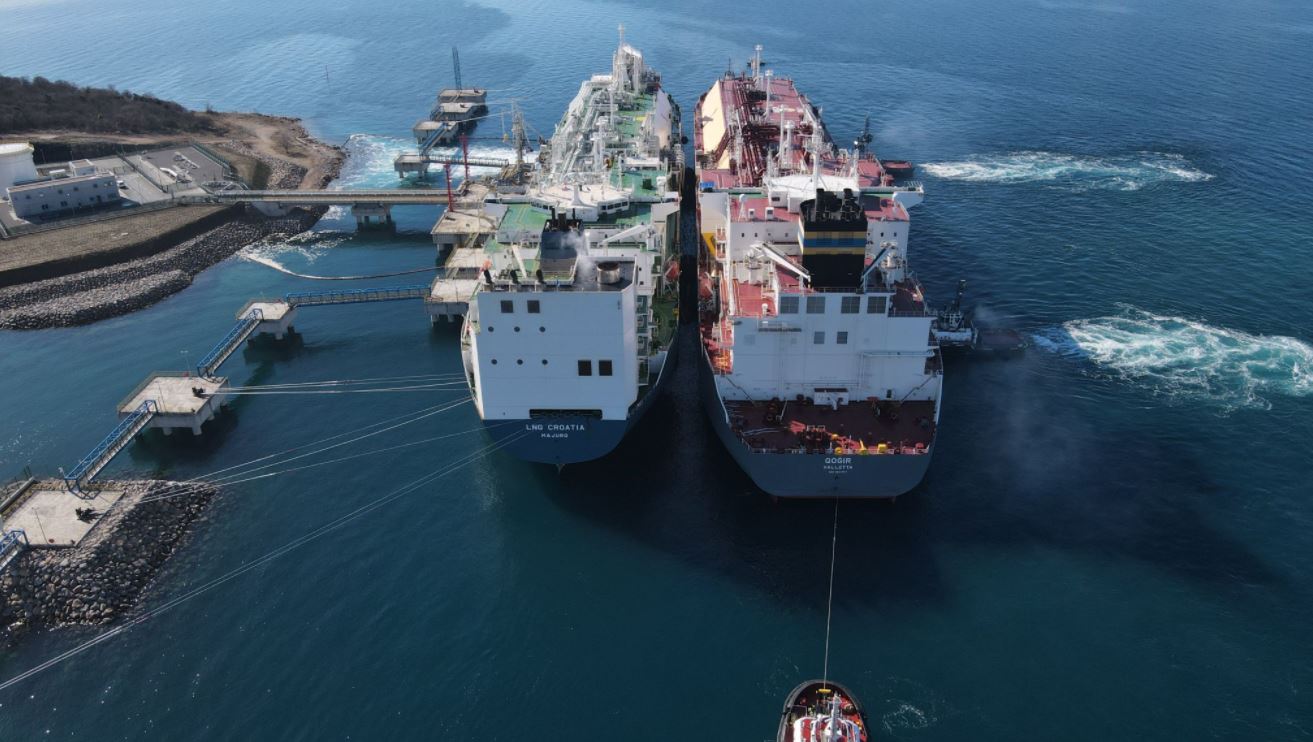Slovenia is looking at ways to import liquefied natural gas from Qatar, adding to a growing number of European countries that are planning to cut reliance on Russian pipeline gas with LNG.
Slovenia imports piped natural gas under a deal with a unit of Russia’s Gazprom. Geoplin takes about 600 million cubic meters of gas per year from Gazprom Export.
The country currently has no LNG import terminals but there were previously plans for a facility in the coastal city of Koper. Slovenia’s two neighbors Croatia and Italy both have LNG import terminals located in the northern Adriatic.
According to a statement on Thursday, Slovenia’s Minister of Infrastructure, Jernej Vrtovec, met with Qatar’s energy minister and chief executive of LNG giant QatarEnergy, Saad Sherida Al-Kaabi, in Doha to discuss potential LNG supplies.
Vrtovec and Al-Kaabi talked about how up to two LNG shipments a year could be brought from Qatar to Slovenian customers via LNG terminals in the northern Adriatic, the Ministry of Infrastructure said in the statement.
However, Slovenia would first need to book capacity at one of the LNG terminals. The statement did not mention the name of the LNG terminals in northern Adriatic.
Vrtovec said that Slovenia has the opportunity to receive Qatari gas in the “near future” and thus ensure supply flexibility.
Croatian FSRU and Italy’s Adriatic LNG terminal
Slovenia could receive these cargoes via Croatia’s FSRU-based LNG import terminal on the northern Adriatic island of Krk.
The LNG import terminal has welcomed 25 cargoes or more than 3.5 million cubic meters of LNG since its launch in January last year. Most of these cargoes came from the US but the facility also received two shipments from Qatar.
MET, Hungary’s MFGK, and Qatar’s PowerGlobe have booked almost all of the volumes at the Krk facility for the next two years.
On the other side, Italy’s Adriatic LNG terminal, owned by ExxonMobil, QatarEnergy, and Snam, is also located in the northern Adriatic.
The biggest LNG regasification terminal out of three large facilities in Italy recently said it has increased its regasification capacity by about 1 billion cubic meters per year to 9 bcm per year.
Edison takes about 80 percent of this terminal’s regasification capacity as part of a long-term deal.
Italy also has Snam’s Panigaglia onshore LNG terminal and small-scale facilities such as the terminal in the port of Ravenna and the Higas terminal located on the Italian island of Sardinia.
However, the country also plans to add new facilities as it looks to reduce reliance on Russian gas as well.
Italy’s energy transition minister said this week that the government had mandated Snam to buy one FSRU and charter another one.
These units could serve facilities in the Tyrrhenian Sea and in the Adriatic Sea, according to Reuters.

